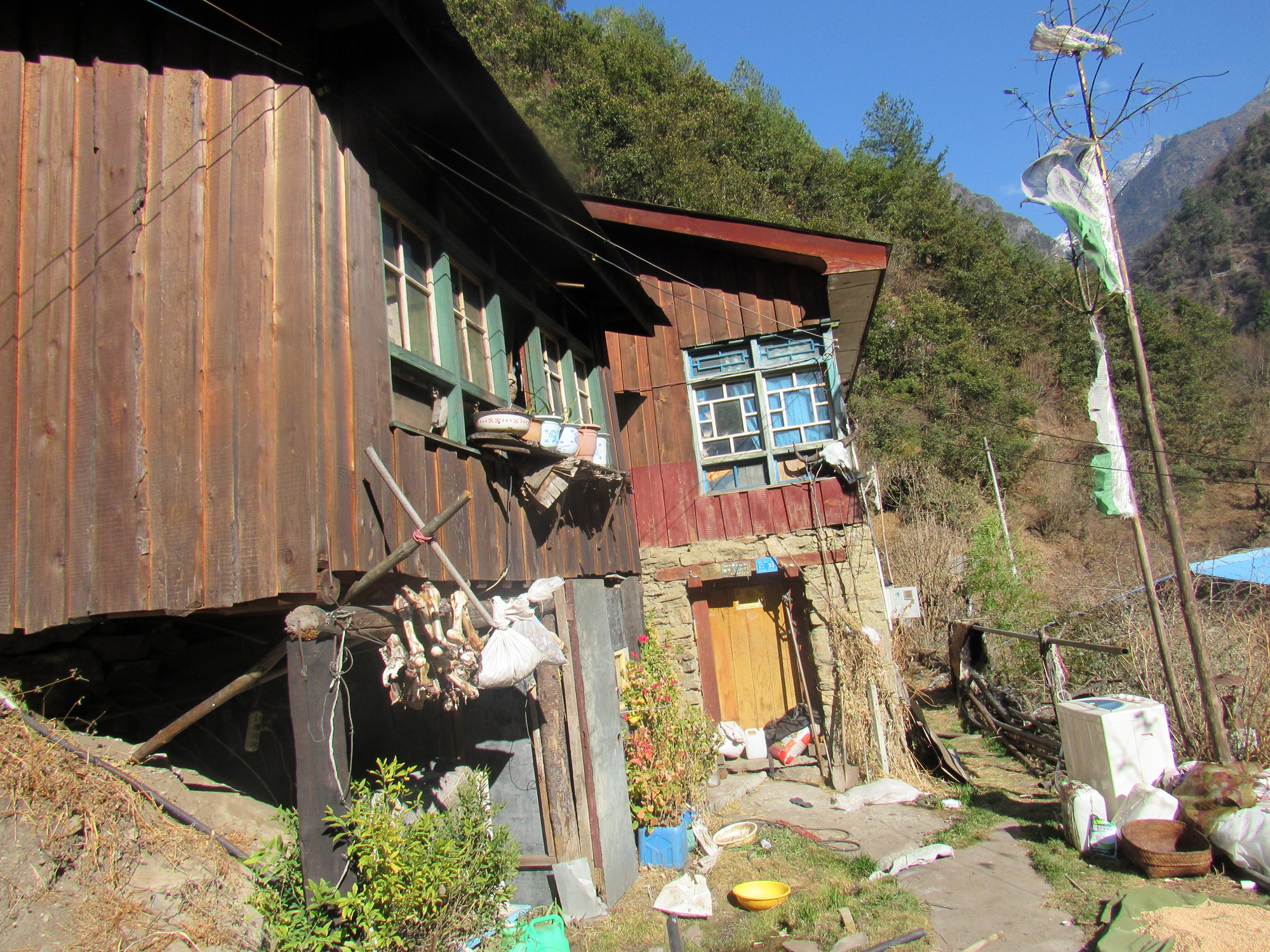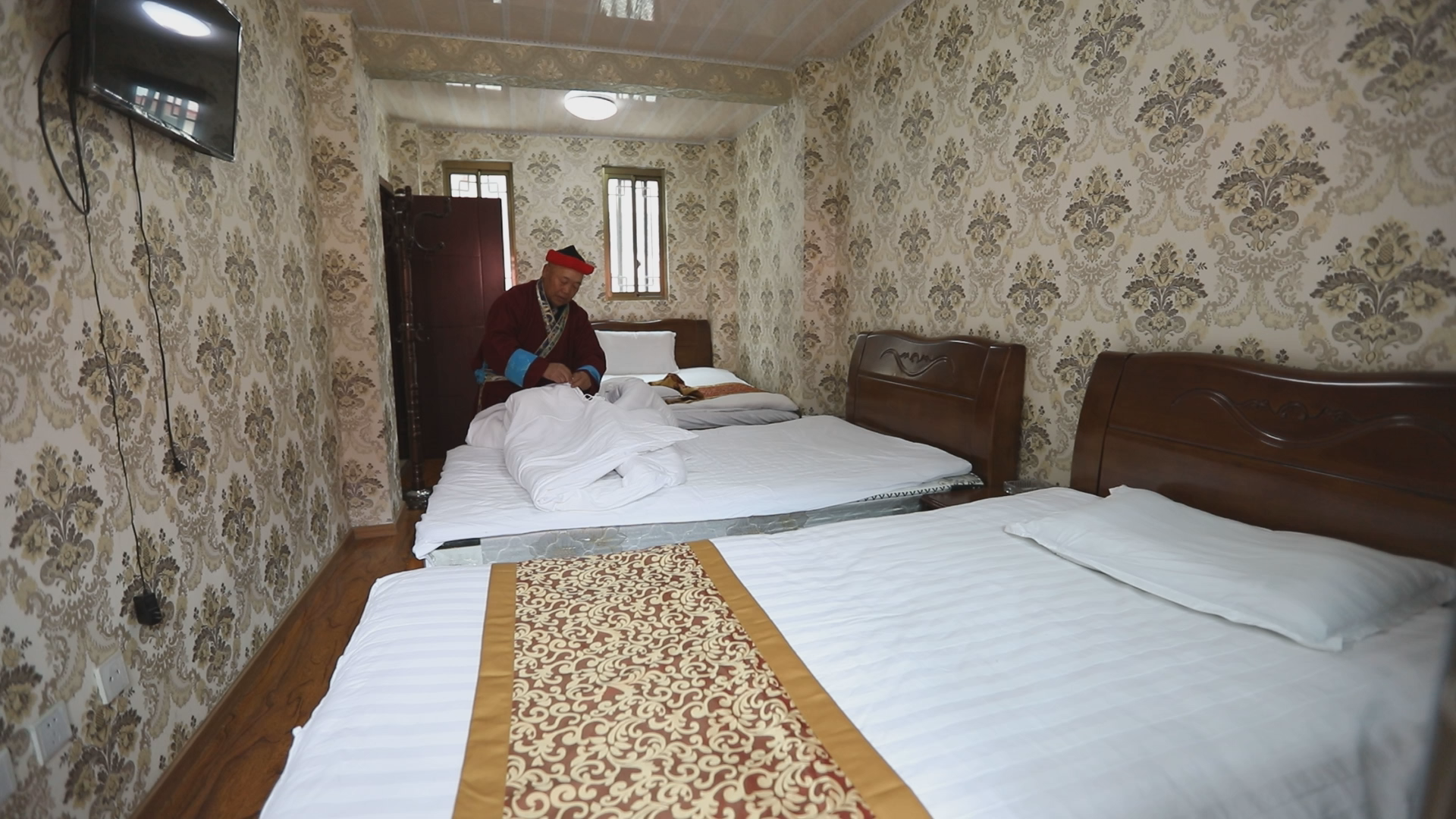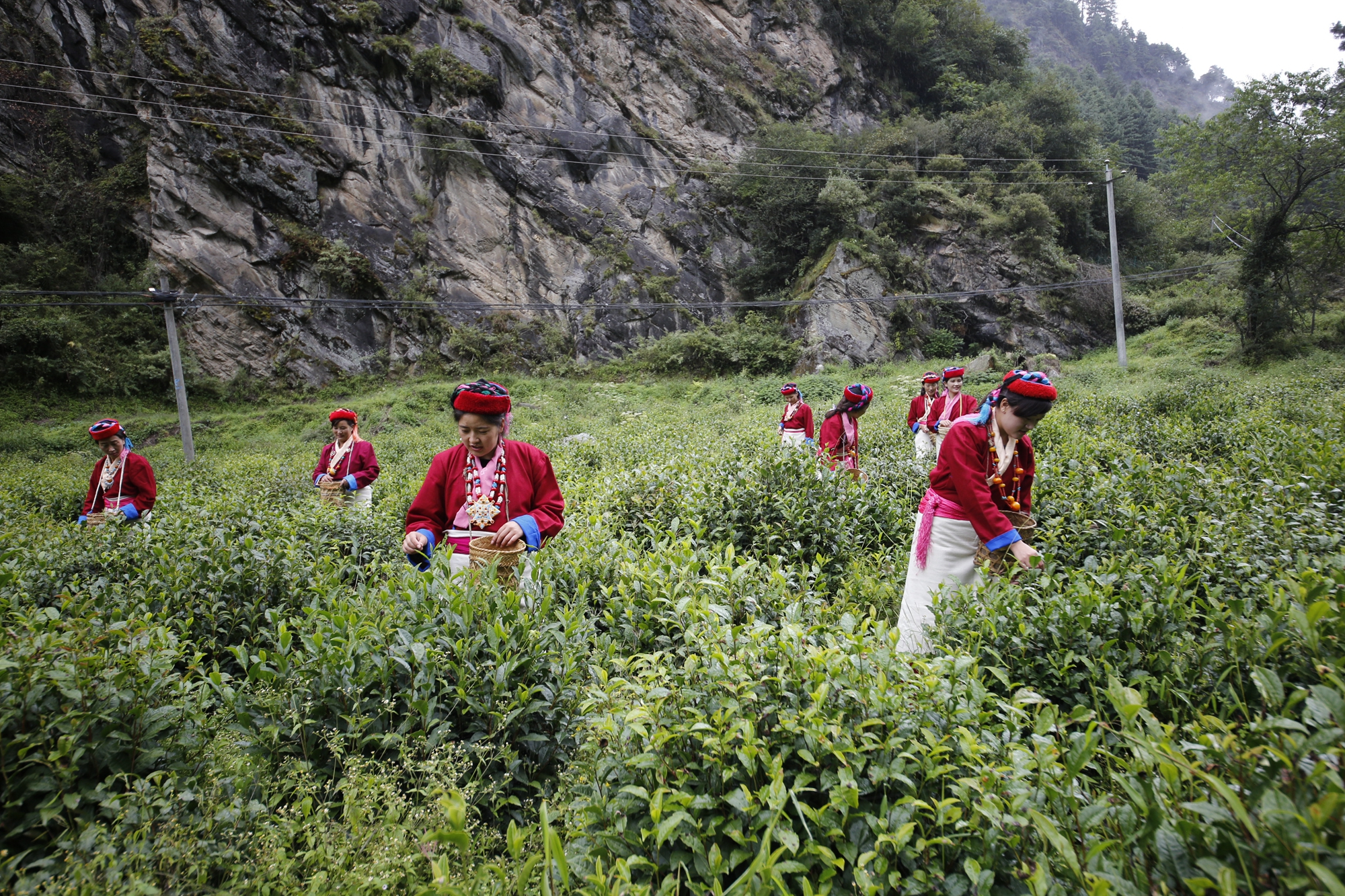

62-year-old Tibetan man Guru from Tibet is a lot busier since moving into his new home early last year. Here he started his own business – a homestay, something he never thought he could do in this remote town in Cona County of Shannan Prefecture, a major hub for Monba people, one of China’s smallest ethnic groups.
“My former residence was very simple. It was dark and not strong. The wooden roof leaked when it rained. It was very inconvenient to live there, not to mention host guests,” Guru told CGTN.
Some 400 kilometers from Tibet’s capital Lhasa, the Le Township with only some 140 people borders both India and Bhutan. For a long time, it was isolated and impoverished.
“The living environment was dirty and messy, and the housing quality was poor,” Bodor, head of Cona County, told CGTN.

Residence of local villagers before the renovation project was launched in 2016. /Photo via township government
Everything changed in 2016, when a government-run program aiming to transform the town’s development was launched, with an investment of some 100 million yuan (14.5 million U.S. dollars).
It underwent an overhaul. Subsidized by the local government, the shabby wooden houses were all replaced with well-equipped buildings.
“During the planning and construction of the project, we tried to keep the unique cultural elements of the Monba ethnic minority. As for the safety level, we made sure that the architecture can withstand a magnitude-8 earthquake,” said Bodor.
As the public infrastructure facilities have also greatly improved, a growing number of tourists flock to the town with beautiful scenery and unique history – it was a main battlefield of the self-defensive counterattack against India in 1962. Now nearly half of the families run homestays. Hosts can earn some 5,000 to 7,000 US dollars each year.

Local villager Guru makes beds at his homestay. More than half of the families of the town operate homestays after moving into their new homes. /CGTN Photo
The promising business also attracts more young people back home like Tsring Lhamo, who used to make a living in urban areas by doing laborious work.
“Benefiting from preferential policies, now I can make a better living just at home,” said Lhamo, who runs a home inn and a teahouse.
Local officials say what also matters is how to reinforce management by engaging residents.
“For example, how to properly handle the garbage and sewage and how to provide quality services to tourists, these are all important for sustainable development,” said Bodor.

Local villagers pick tea leaves. /Courtesy of Jamtso
Thanks to its favorable natural conditions, the town also boasts high-quality tea. A tea cooperative has been established to produce and sell various tea products, and serves as an important source of income for locals.
Over the past decades, the town with only some 140 people has remained tranquil, but the villagers still remain vigilant and work to safeguard their homeland with routine patrols along the border, from which they can get subsidies.
Besides Le Township, some neighboring towns have also experienced radical changes with brand-new infrastructures and booming industries.

Copyright © 2018 CGTN. Beijing ICP prepared NO.16065310-3
Copyright © 2018 CGTN. Beijing ICP prepared NO.16065310-3